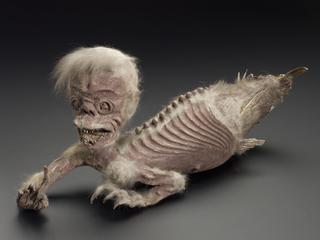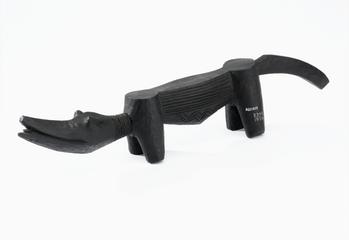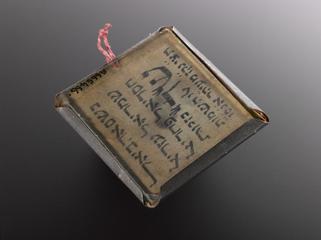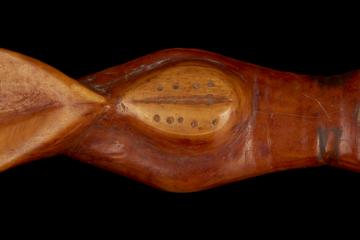
Coil of dried eel skin, United Kingdom, 1880-1930
- Made:
- 1880-1930 in United Kingdom




Eel skin coiled to fit round finger to cure and ward off cramp, probably English, 1880-1930
The growing influence of biomedicine in the 1800s did not necessarily replace established forms of treatment based on belief and superstition. What could be referred to as folk medicine – customs that often went back generations – continued to be practised. For example, eel skins wrapped around the finger to ward off cramp were a Scottish medical tradition. The eel had first to be killed, skinned and then dried out to keep its coiled shape. Garters of eel skin around the thigh were also worn in Suffolk to prevent rheumatism and cramp.
Details
- Category:
- Ethnography and Folk Medicine
- Collection:
- Sir Henry Wellcome's Museum Collection
- Object Number:
- A665586
- Materials:
- skin, eel
- Measurements:
-
overall: 40 mm 38 mm,
- type:
- eel skin




